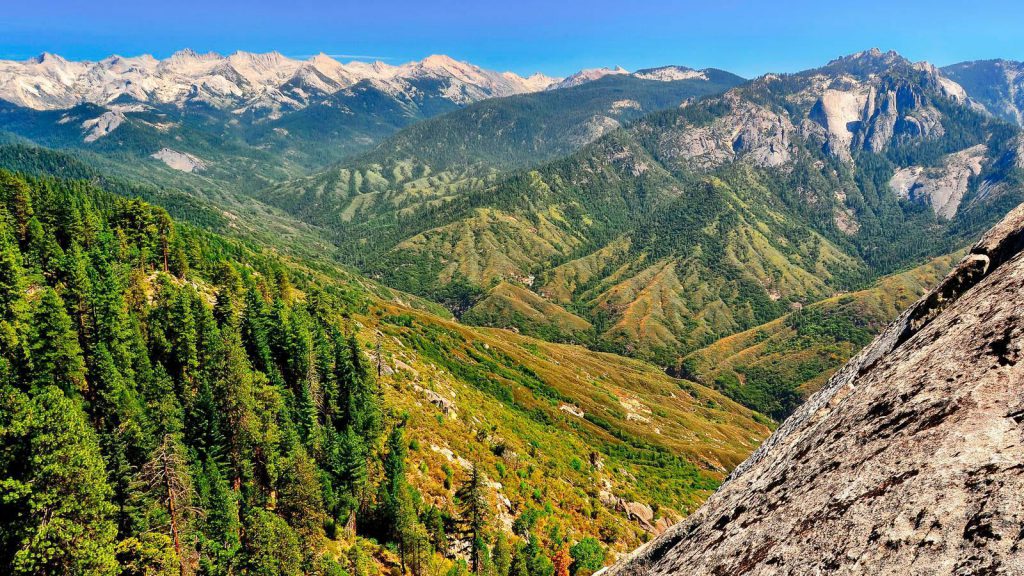Content
A sanctuary of nature and adventure awaits you at Kings Canyon National Park. With its impressive geology, colossal sequoias, and breathtaking panoramic views, this park is a true treasure of California. We invite you to explore and discover its majesty and natural beauty.
Introduction to Kings Canyon National Park
History and Creation of the Park
Kings Canyon National Park was established in 1940, though its history dates back much further. Native Americans have inhabited the area for thousands of years, and the first European explorers arrived in the 19th century. This park was created with the goal of protecting and preserving the unique beauty and biological diversity of the region.
Ecological and Geological Significance
Kings Canyon National Park holds vital ecological and geological importance. It hosts a great diversity of flora and fauna, including several endangered species. Geologically, the park’s area showcases a fascinating combination of features, including its impressive canyon, formed by glacial and river erosion, and the forests of towering giant sequoias, some of the largest and oldest living organisms on the planet.
Location and How to Get There
Kings Canyon National Park is located in the state of California, in the United States. Situated in the majestic Sierra Nevada mountains, this park is an ideal destination for nature and adventure enthusiasts. The best time to visit is between May and October when the weather is more pleasant and all roads and trails are open.
Main Attractions
Kings Canyon
Kings Canyon is the crown jewel of the park. This awe-inspiring canyon, formed over millions of years by glacial and river erosion, offers panoramic views that will leave you breathless.
Giant Sequoias
The giant sequoias are another major draw of Kings Canyon National Park. These mighty wonders of nature, some of the largest and oldest living beings on the planet, are a spectacle not to be missed.
Activities and Experiences
Kings Canyon National Park offers a wide range of activities and experiences. You can hike along the park’s impressive trails, camp under the stars, observe local wildlife and flora, or simply enjoy the beauty of the landscape with your camera or brushes.
Hiking and Trekking Routes
Kings Canyon National Park offers numerous hiking trails that allow you to explore its most spectacular landscapes. From easy walks to more challenging trekking routes, there are options for all skill levels and physical fitness.
Camping and Picnicking
There are multiple designated camping and picnic areas in the park. Camping under the stars surrounded by the majestic giant sequoias is an unforgettable experience that visitors can enjoy.
Wildlife and Flora Observation
The park is home to a diversity of wildlife and unique flora. Nature lovers can enjoy observing species of birds, mammals, and plants, some of which are endemic to the region.
Photography and Painting
With its impressive natural beauty, Kings Canyon National Park is a paradise for photographers and artists. Capture the majesty of the giant sequoias, the vastness of the canyon, or the vibrant colors of the flora and fauna with your camera or canvas.
Accommodation and Services
There are a variety of accommodation options within and near the park, ranging from campgrounds to hotels, resorts, and more. Additionally, the park offers a range of services for visitors, including visitor centers, grocery stores, and equipment rental.
Accommodation Options Within and Near the Park
Multiple accommodation options are available for visitors. Within the park, there are campgrounds and cabins. In the vicinity, hotels and hostels can be found for those seeking a bit more comfort.
Services Available for Visitors
The park provides a variety of services to ensure a comfortable and enjoyable visit. These include visitor centers, restaurants, supply stores, and equipment rental services for outdoor activities.
Tips and Recommendations for Visitors
Always remember to follow the park rules to protect both your safety and the nature around you. Make sure to carry the appropriate equipment and be prepared for the weather and terrain conditions. And last but not least, strive to be a responsible and sustainable visitor.
Safety Tips
It’s important to keep safety guidelines in mind when visiting the park. This includes being prepared for variable weather, maintaining a safe distance from local wildlife, and adhering to park regulations at all times.
Equipment and Preparation
Make sure to bring the appropriate equipment depending on the activities you plan to engage in. This could include proper clothing, hiking boots, camping supplies, sunscreen, among others.
Suggestions for Sustainable Visits
It’s essential that all visitors strive to minimize their impact on the park’s ecosystem. This may involve practices such as following the "leave no trace" principle, recycling, and respecting park regulations.
Regulations and Permits
Kings Canyon National Park has a set of regulations that all visitors must follow. Additionally, for certain activities such as camping in remote areas or climbing, you may need to obtain a permit.
Park regulations
It’s important to familiarize yourself with the park’s regulations before visiting. These could include rules regarding camping, making fires, and interacting with wildlife.
Conservation and Education Programs
Current Conservation Efforts
Kings Canyon National Park is dedicated to protecting and conserving its unique ecosystem. The park conducts a range of conservation programs to safeguard its sequoia forests, local wildlife, and distinctive geology. These efforts encompass fire management, habitat restoration, and species monitoring.
Education Programs and Volunteer Activities
The park also offers educational programs for visitors of all ages. These programs aim to raise awareness and appreciation for nature and the importance of its conservation. Additionally, there are opportunities for visitors to get involved as volunteers and contribute to the park’s conservation.
